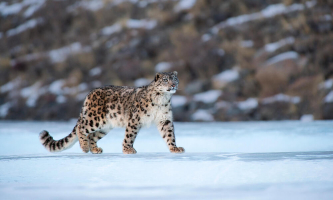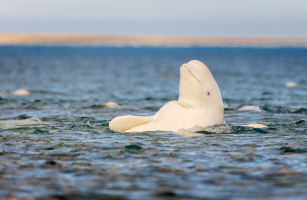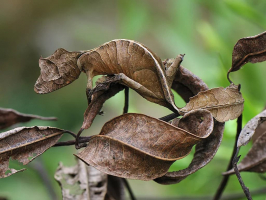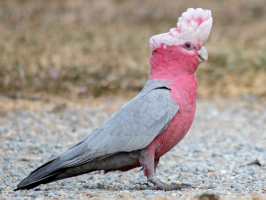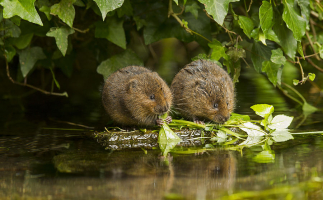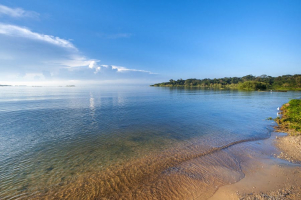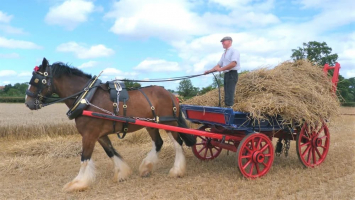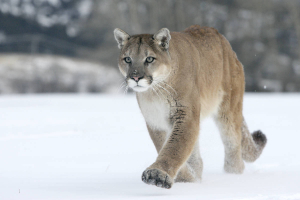Top 10 Most Incredible Animals Only Found In Africa
The second-largest continent in the world, Africa is home to a wide variety of cultures and stunning natural scenery. There is no disputing that Africa is home ... read more...to some of the most magnificent animals in the world, and viewing the wildlife would likely rank among the top reasons to travel to several of the countries mentioned here. There are plenty of additional fascinating African species that you could find interesting. Here is a list of amazing animals only found in Africa, let's find out!
-
The Okapi also referred to as the "forest giraffe", resembles a combination of a zebra and a deer. It is the giraffe's only living relative, though. The only place where the okapi may be found in the wild is in the Ituri Rainforest in the Democratic Republic of the Congo. It has thick, oily fur to keep dry in the rain. On the underside of each hoof are scent glands that aid in marking the animal's territory. The okapi's small horns are covered in skin, save for the tips. All males have horns, although the majority of females have knobby bumps.
The okapi inhabits the rainforest's lush vegetation. The brown and white stripes on its rump, which resemble streaks of sunlight passing through the trees, help it fit in with its surroundings. Fruits, buds, leaves, twigs, and other vegetation make up its plant-based diet. These animals have four stomachs that help with the digestion of difficult plants, just like the giraffe and cow. They have a long, black tongue that can remove leaves from branches, just like their giraffe cousin.
The okapi is a threatened species, according to the International Union for Conservation of Nature's (IUCN) Red List of Threatened Species. Although the exact number of wild animals is unknown, scientists believe that over the past two decades, populations may have been cut in half.
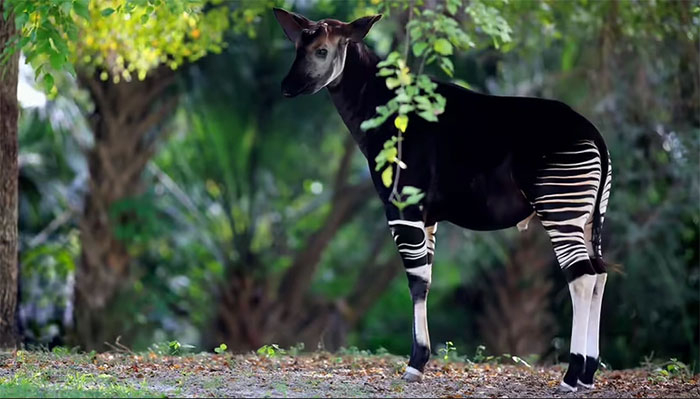
Via: Nationalgeographic.com 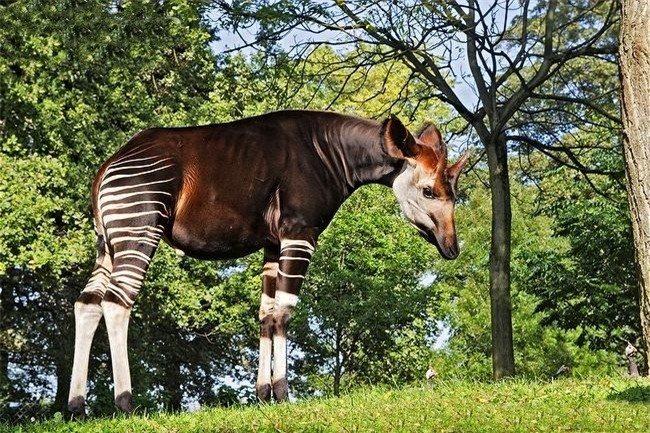
Via: Wikipedia -
The African buffalo (Syncerus caffer) is a large sub-Saharan African bovine. Syncerus caffer, the Cape buffalo, is the typical subspecies, and the largest one, found in Southern and East Africa. S. c. nanus (the forest buffalo) is the smallest subspecies, common in forest areas of Central and West Africa, while S. c. brachyceros is in West Africa and S. c. aequinoctialis is in the savannas of East Africa. The adult African buffalo's horns, which have joined bases and form a continuous bone shield across the top of the head known as a "boss", are its distinguishing feature. One of the most dangerous animals on the African continent, it is believed to gore, crush, and kill around 200 people every year.
The African buffalo is only distantly related to other larger bovines and is not a domestic cattle progenitor. The African buffalo, unlike its Asian equivalent, the water buffalo, has never been domesticated, possibly due to its erratic temperament. Adult African buffaloes are naturally preyed upon by lions, hyenas, and huge crocodiles. The Cape buffalo, one of the "big five" animals, is prized as a hunting trophy.
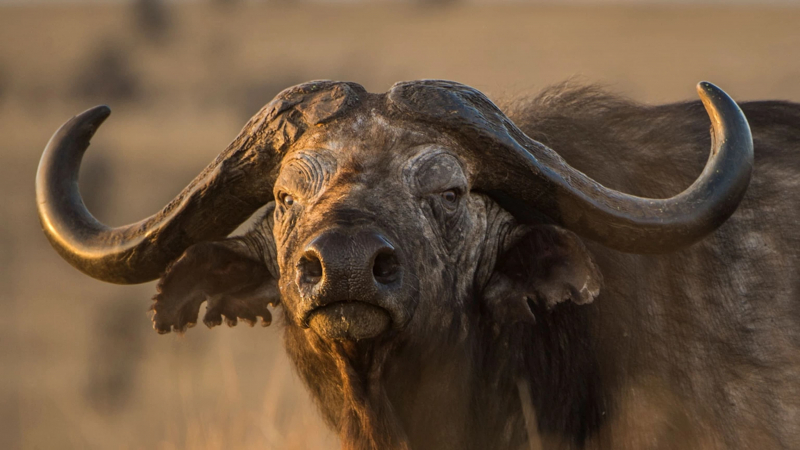
Via: National Geographic 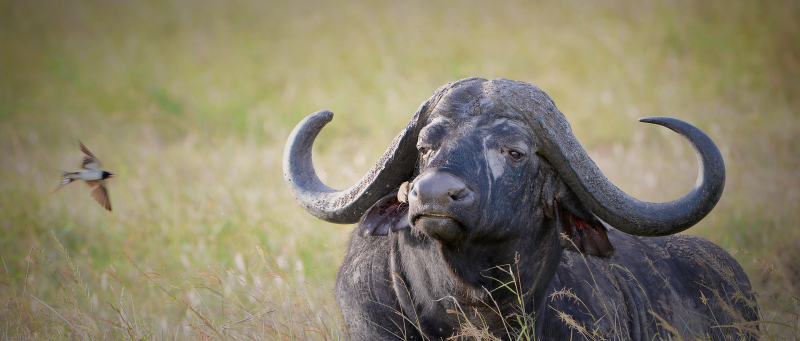
Via: African Wildlife Foundation -
Galagos are also known as bushbabies, a small primate that has a length between 6-8 inches and weighs up to 10 oz. They are small nocturnal primates native to continental, sub-Sahara Africa, and make up the family Galagidae (also sometimes called Galagonidae). They are considered a sister group of the Lorisidae. The galagos' thick fur is either brown or grey. They have enormous ears that can fold down to give them a superb hearing sense. These nocturnal species have huge eyes and exceptional night vision.
The little galagos have strong hind legs, which makes them exceptional jumpers. Galagos are capable of leaping up to 2.25 meters in height. Galagos, in contrast to other primates, have a second tongue that is tucked beneath the main one. Most of the time, the nocturnal galagos are found in trees. They can readily move between the branches because of the flexible joints in their legs. These animals mostly consume fruits, tree gums, and insects for food.
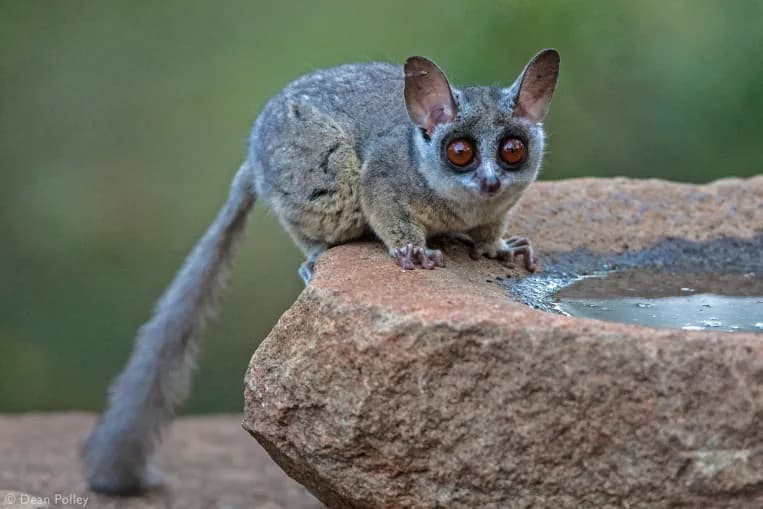
Via: Primates Park 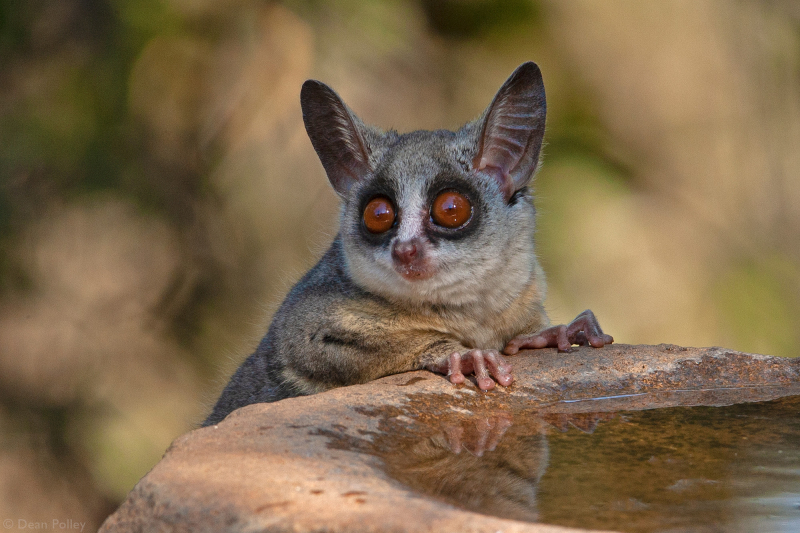
Via: Africa Geographic -
The only extant member of the genus Crocuta is the Spotted hyena (Crocuta crocuta), also referred to as the laughing hyena, and it is indigenous to sub-Saharan Africa. The IUCN rates it as being of least concern due to its wide distribution and substantial population, which is thought to number between 27,000 and 47,000 people. Outside of protected areas, however, habitat loss and poaching are causing the species to decline. The species once roamed all of Europe for at least a million years until the end of the Late Pleistocene, and it may have come from Asia.
The spotted hyena is the largest member of the Hyaenidae that is currently known, and it differs from other species physically in that it has a build that is somewhat bear-like, rounded ears, a less prominent mane, a spotted coat, more dual-purposed teeth, fewer nipples, and a pseudo-penis in the female. It is the only mammalian species that have a pseudo-penis in place of an external vaginal opening.
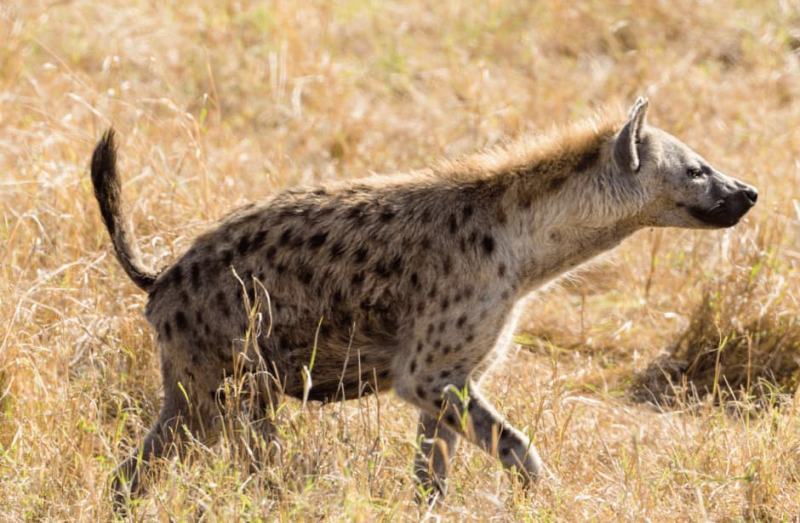
Via: Animal Corner 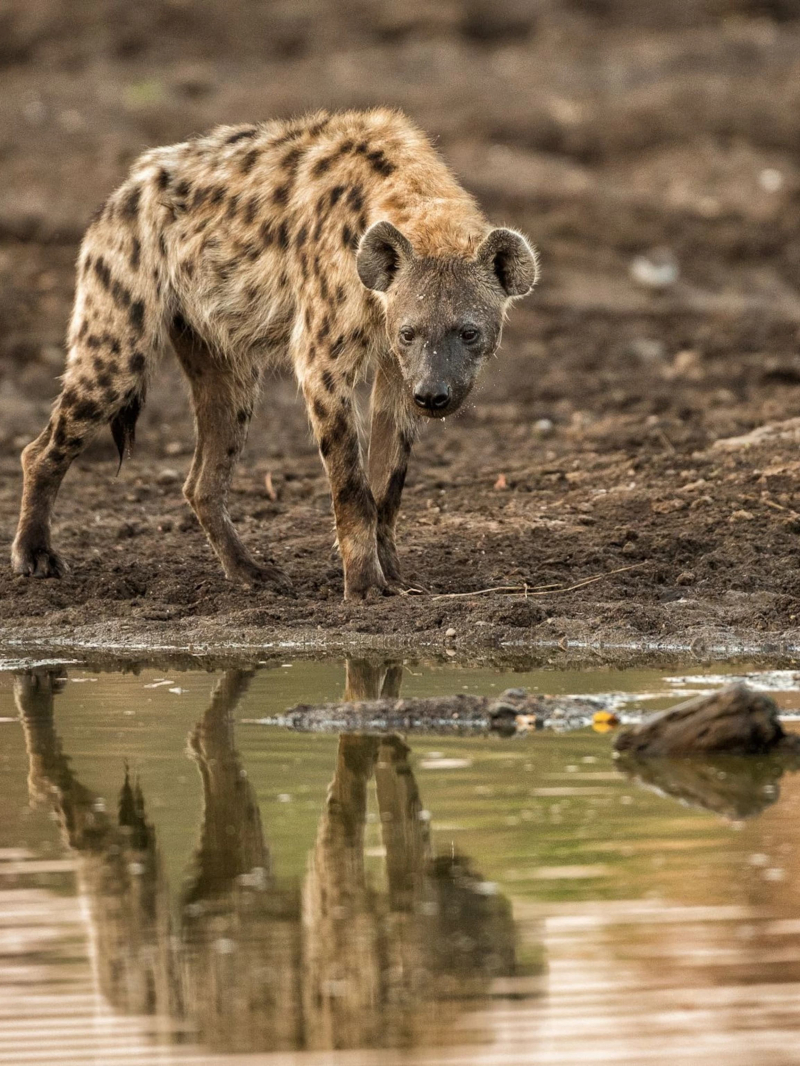
Via: National Geographic -
The Hartebeest. also known as kongoni or kaama, is an African antelope. It is the only member of the genus Alcelaphus. The hartebeest is a huge antelope that typically measures 200 to 250 cm in length for its head and body. It stands just over 1 m (3 ft 3 in) tall at the shoulder (79 to 98 in). The weight is between 100 and 200 kg (220 to 440 lb). It has a short neck, pointed ears, a particularly long forehead, and strangely formed horns. It has extraordinarily lengthy legs, which frequently have black patterns.
Typically, the coat is short and lustrous. The western hartebeest has a sandy brown coat, while the Swayne's hartebeest has a chocolate brown coat. Coat colors vary per subspecies. In every subspecies, both sexes have horns, though the females' are thinner. Horns can grow to be 45–70 cm (18–28 in) long. Apart from its long face, the large chest and the sharply sloping back differentiate the hartebeest from other antelopes. A conspicuous hump over the shoulders is due to the long dorsal processes of the vertebrae in this region.
Hartebeest often lives in dry savannas and woodland grasslands, but following rain, they frequently shift to drier areas. They have been reported from heights of up to 4,000 meters on Mount Kenya (13,000 ft). The hartebeest was once widely distributed throughout Africa, but because of habitat destruction, poaching, human settlement, and competition with cattle for food, population levels have drastically decreased. The conservation status of each of the eight subspecies of the hartebeest varies.
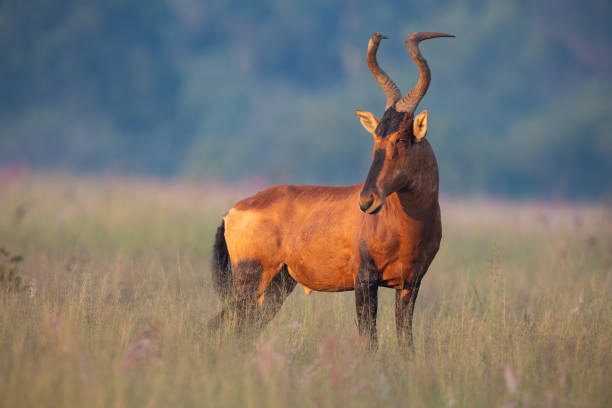
Via: iStock 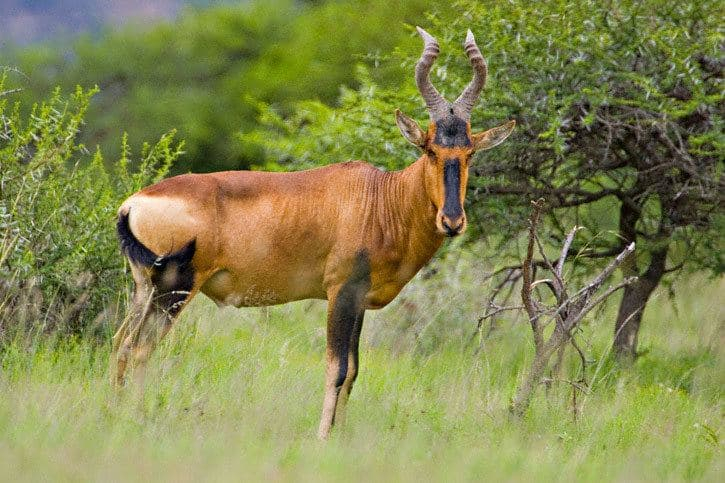
Via: Alchetron -
The Mantled guereza (Colobus guereza), also known simply as the guereza, the eastern black-and-white colobus, or the Abyssinian black-and-white colobus, is a black-and-white colobus, a type of Old World monkey. Several countries in west, central, and East Africa, including Cameroon, Equatorial Guinea, Nigeria, Ethiopia, Kenya, Tanzania, Uganda, and Chad, are home to this plant's native species. The species is divided into several visually distinct subspecies. Its name alludes to its unusual appearance; the term "mantle" refers to the long white hair fringes that extend down each side of its black trunk. It has a huge white tail tuft and white hair that frames its face.
The mantled guereza lives in both deciduous and evergreen forests and is a nocturnal arboreal species. It is a species that is able to adapt to changes in its habitat and favors secondary woodland near rivers or lakes. Although it was always believed that it exclusively consumed leaves, it now consumes seeds, fruits, and arthropods.
Living in social groups of three to fifteen people is the mantled guereza. These groups typically consist of a dominant male, numerous females, and females young. It possesses a polygynous mating system, and vocal communication is used to start copulation. Infants are born with pink skin and white fur after a gestation period of slightly over five months. By three to four months, their coloration will have darkened to that of adults. The dawn chorus of the mantled guereza is widely recognized. The males' "roar" is a form of long-distance communication that serves to strengthen territorial boundaries. Additionally, it employs facial expressions, bodily postures, motions, and other vocalizations to communicate.
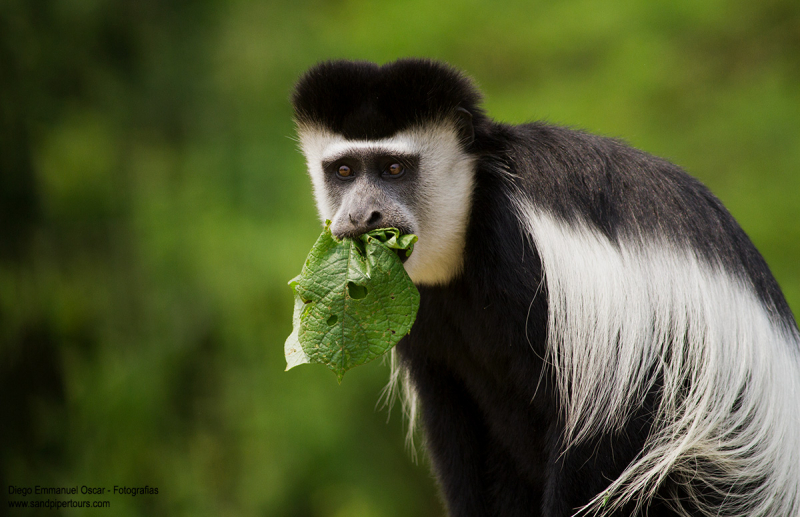
Via: EcoRegistros 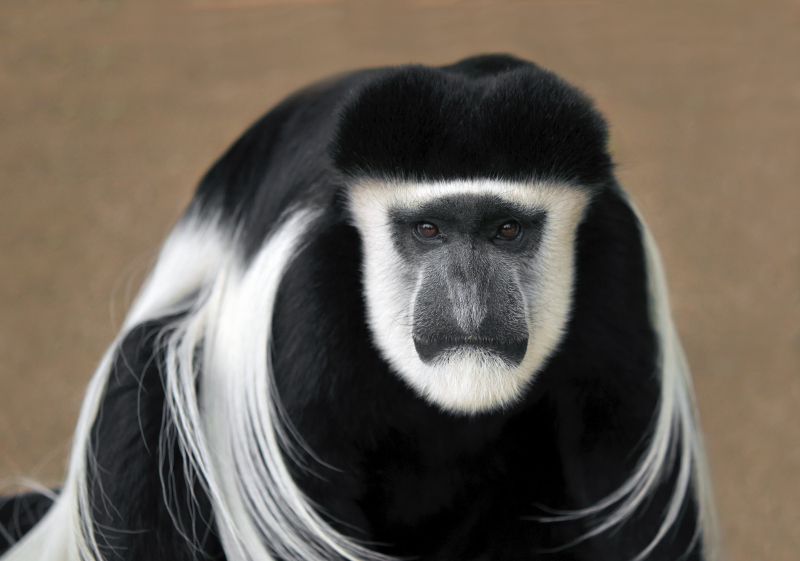
Via: Science Photo Library -
The Grey-crowned crane (Balearica regulorum), also known as the African crowned crane, golden crested crane, golden-crowned crane, East African crane, East African crowned crane, African Crane, Eastern crowned crane, Kavirondo Crane, South African crane, Crested crane, is a bird in the crane family, Gruidae.
In Sub-Saharan Africa, it can be found in dry savannah, albeit it prefers somewhat wetter environments for nesting. In Uganda, Kenya, and as far south as South Africa, they can also be found in marshes, cultivated plains, and grassy flatlands next to rivers and lakes. Birds closer to the tropics are often stationary, and this animal has no predictable migration tendencies. In drier seasons, birds in more desert regions - particularly Namibia - make localized seasonal movements.
The grey crowned crane has a wingspan of 2 m, is about 1 m (3.3 ft) tall and weighs 3.5 kg (7.7 lbs) (6.5 ft). Its body feathers are primarily grey. The wings are mostly white, but they also have feathers of different colors and a recognizable black patch at the very top. A tight crown of golden feathers is on the head. The throat pouch is an inflatable bright red object, while the sides of the face are white. The legs are black, while the bill is gray and fairly short. They can wade across the grass because of their long legs. Instead of being used for defense or gripping, the feet are large yet slender and designed for balance. Although men tend to be slightly larger than women, the sexes are similar. Young birds are greyer than adults, with feathered buff faces.
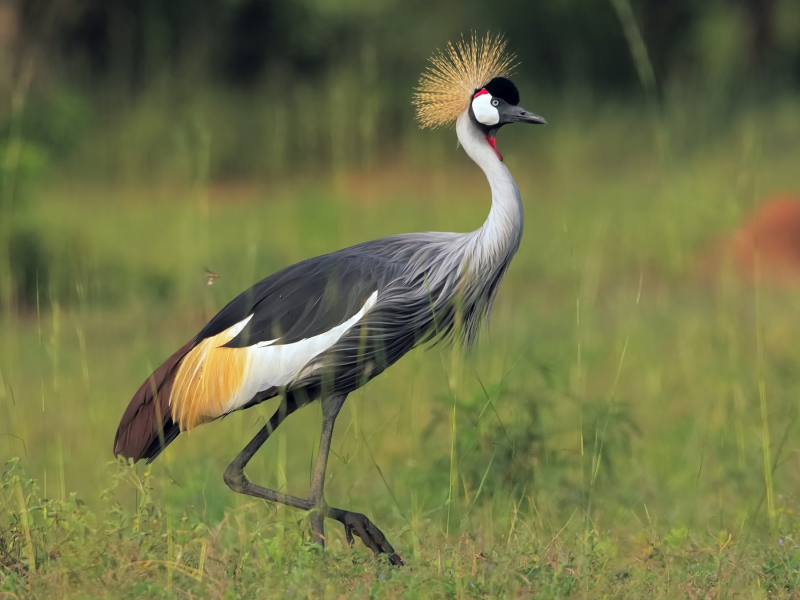
Via: eBird 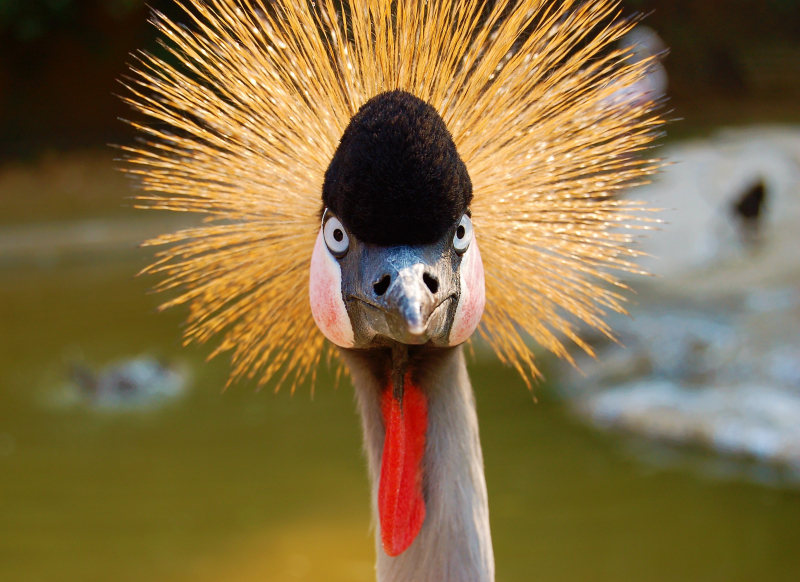
Via: Wikimedia Commons -
A Dik-dik is a name for any of four species of small antelope in the genus Madoqua that live in the bushlands of eastern and southern Africa. To help them live in arid areas, dik-diks have unique physiological adaptations. For example, dik-diks have less sweat gland density than other mammals like cattle. Similar to this, dik-diks can concentrate their urine in more arid settings. These modifications aid dik-diks in retaining body water. Diki-diks are projected to have among the highest metabolic rates and highest energy requirements per kilogram of all ruminants due to their small stature. However, as a physiological adaptation to the heat and aridity, dik-diks have a lower metabolic rate than would be expected for their size.
Dik-diks can live for up to ten years and are roughly 30-40 centimeters (12-15.5 in) tall at the shoulder, 50-70 centimeters (19.5-27.5 in) long, and 3-6 kilograms (6.6-13.2 lb) in weight. The alarm sounds of the females gave rise to the moniker "dik-dik." Both the male and the female create a harsh, whistling noise in addition to the alarm call of the female. Other animals may be made aware of predators by these calls.
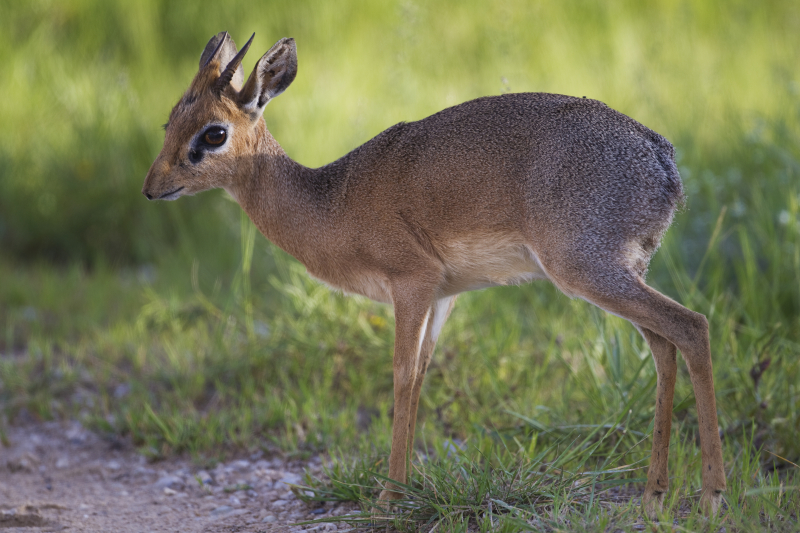
Via: Wikipedia 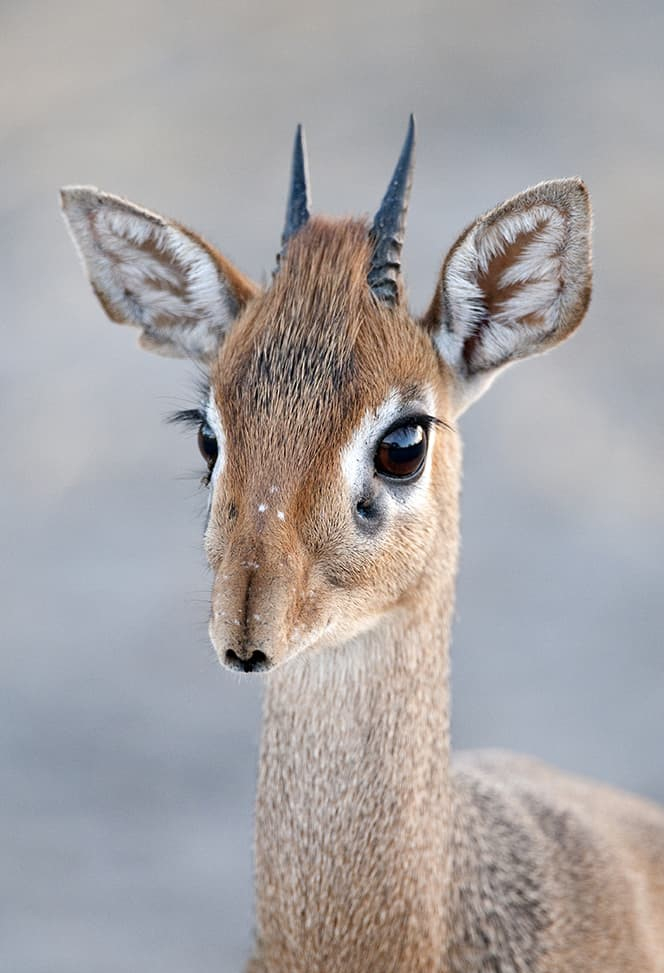
Via: Pinterest -
The African civet (Civettictis Civetta) is a large viverrid native to sub-Saharan Africa, where it is considered common and widely distributed in woodlands and secondary forests. It is listed as Least Concern on the IUCN Red List since 2008. In some countries, it is threatened by hunting, and wild-caught individuals are kept for producing civetone for the perfume industry.
The African civet is largely nocturnal, sleeping in dense vegetation during the day and waking up at dusk. It is a solitary mammal with distinctive coloring, including rings on its tail and black and white spots covering its rough fur. Its eyes have black stripes around them that closely resemble raccoon eyes. Its erectile dorsal crest and excessively big hindquarters are other distinctive characteristics. It is a generalist omnivore that feeds on tiny vertebrates, invertebrates, eggs, carrion, and plant materials. One of the rare carnivores that can consume dangerous insects like millipedes and termites. Instead of using sight, it mostly uses scent and sound to find prey. It is the only specimen of its kind.
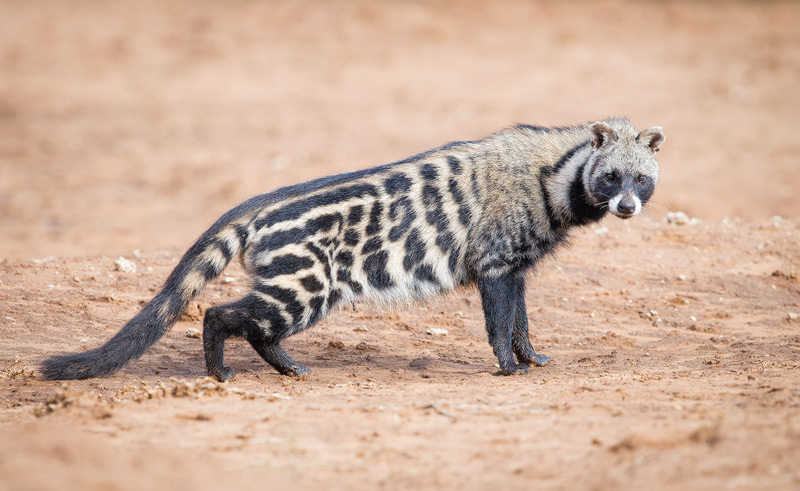
Via: Animal Spot 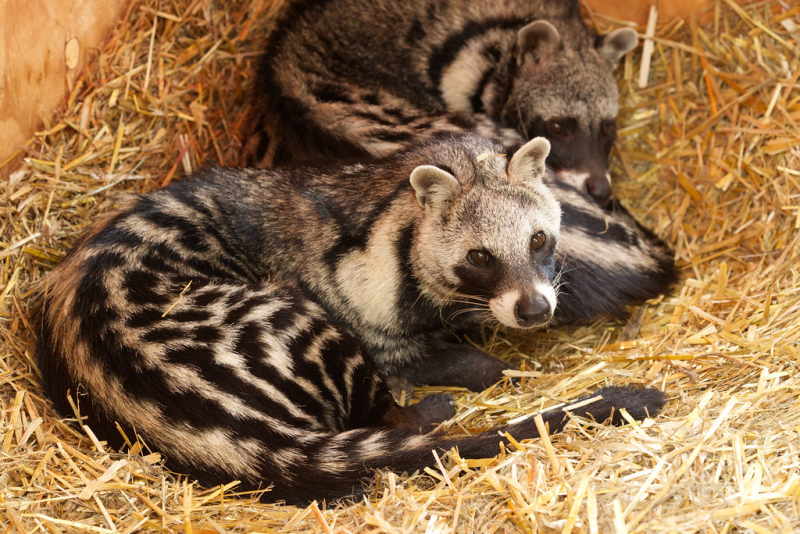
Via: Flickr -
Ostriches are large flightless birds of the genus Struthio in the order Struthioniformes, part of the infra-class Palaeognathae, a diverse group of flightless birds also known as ratites that include the emus, rheas, and kiwis. The common ostrich and the Somali ostrich are the only two species of ostrich that exist today.
They are indigenous to Africa and are the only living land animals to lay the largest eggs. They can run at a speed of 70 km/h (43.5 mph), making them the quickest birds on land. Today, ostriches are only found natively in the wild in Africa, where they occur in a range of open arid and semi-arid habitats such as savannas and the Sahel, both north and south of the equatorial forest zone. The fact that ostriches are the heaviest living birds is noteworthy.
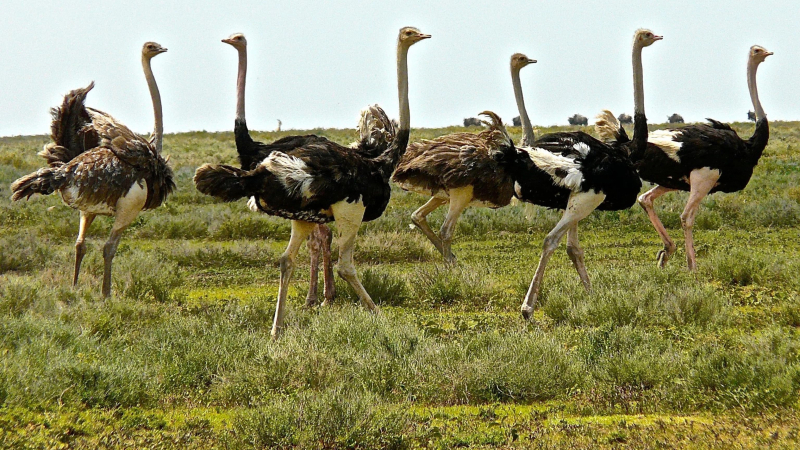
Via: National Geographic 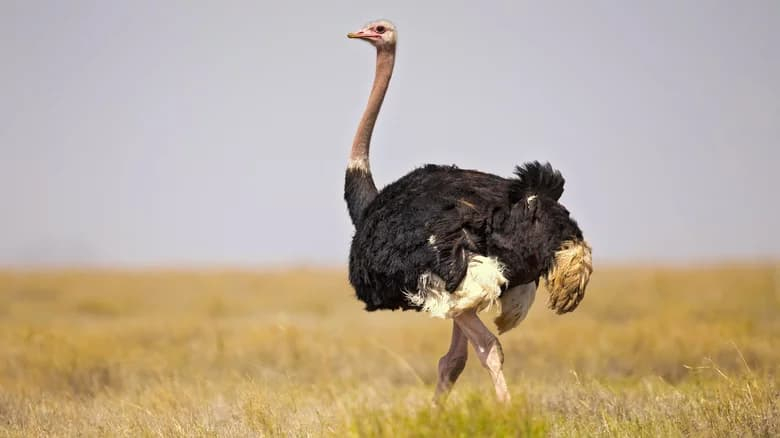
Via: Milan Zygmunt












